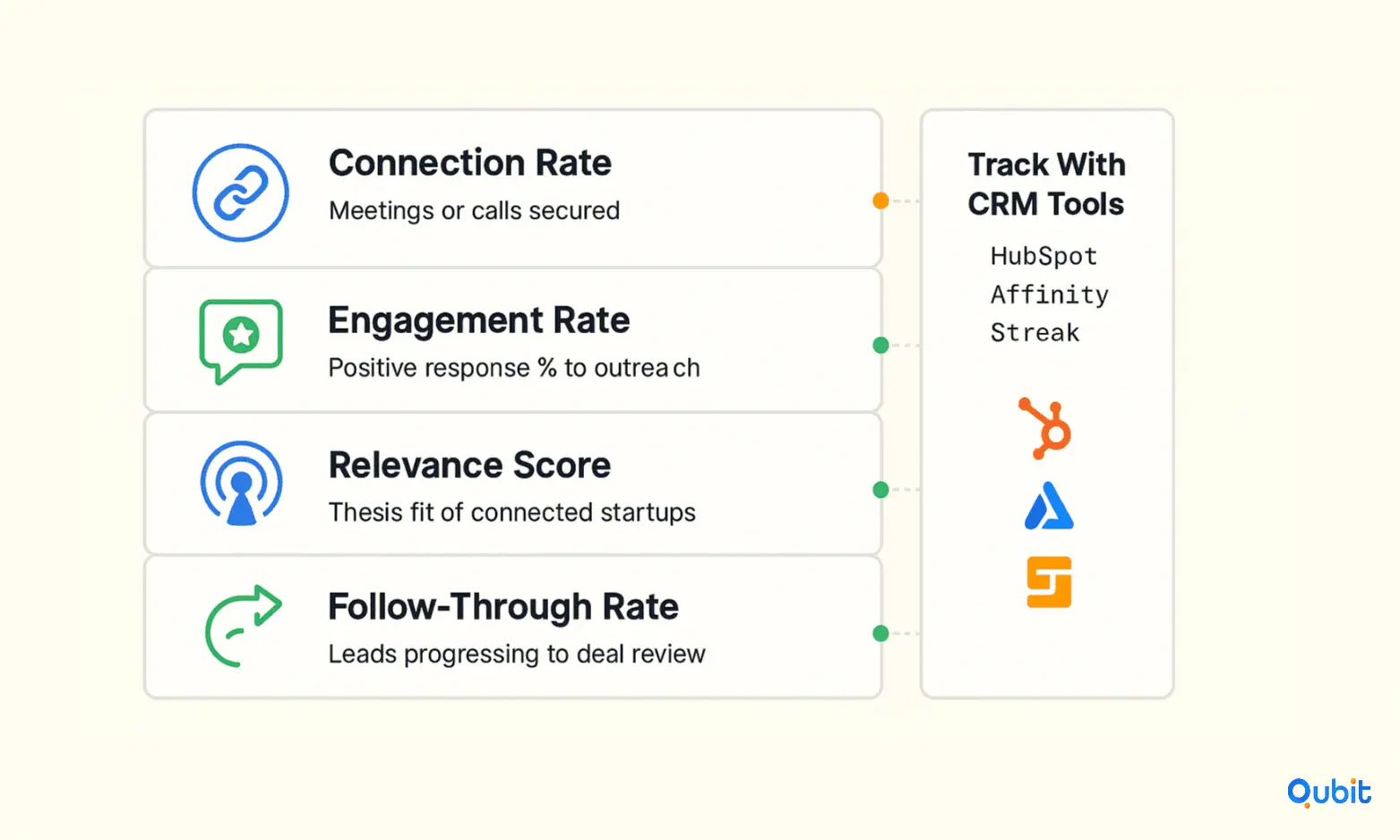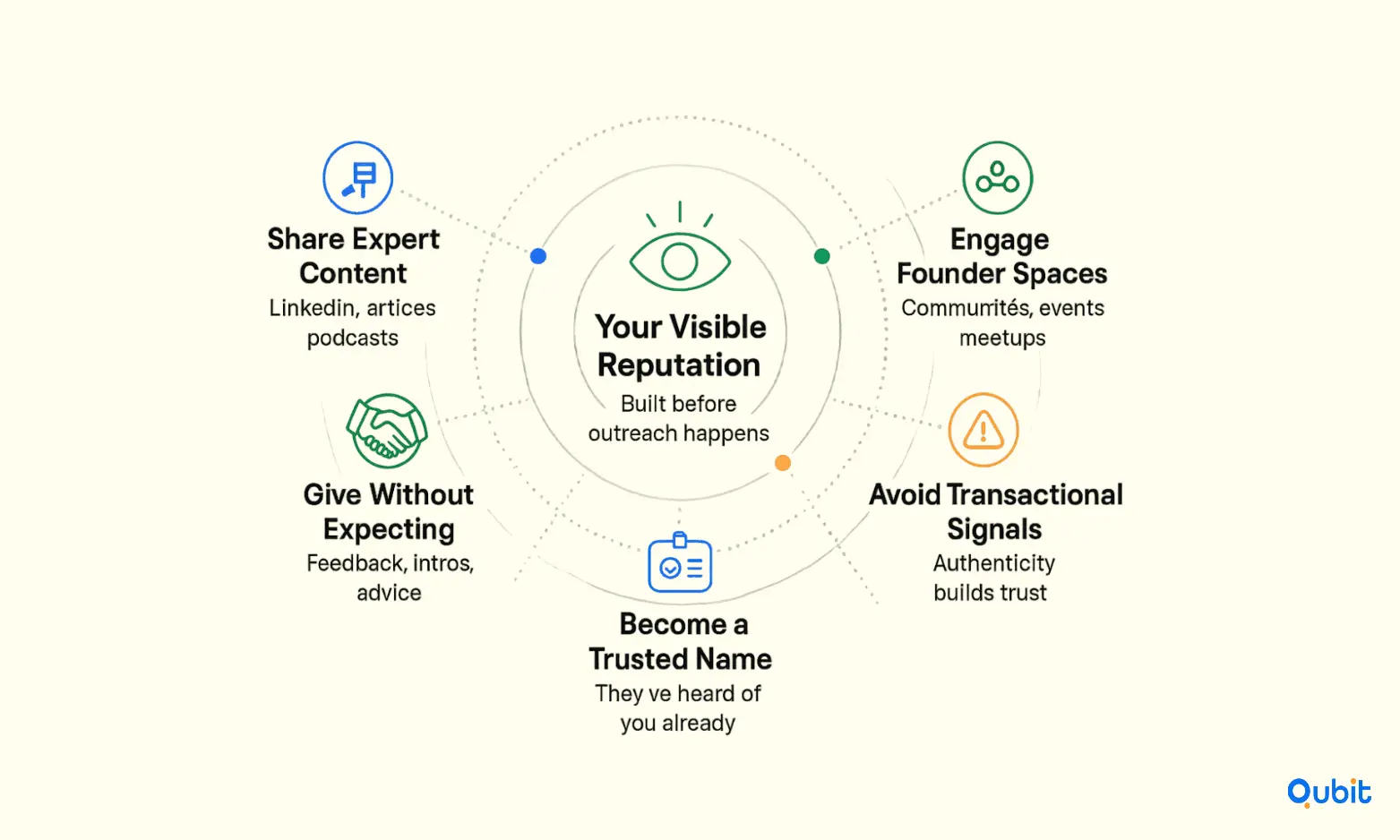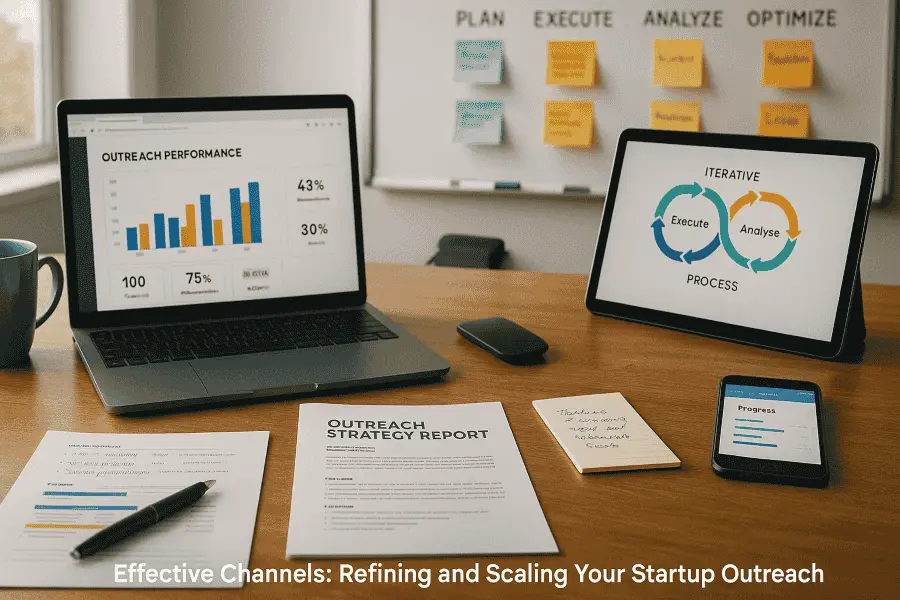The startups you want to back are also being courted by other investors—some with bigger checks, others with flashier brands. If your outreach hasn’t evolved in months, you risk blending into the noise.
The reality is that outreach for investors is never “finished.” Markets shift, founder expectations evolve, and competitive pressures force you to adapt faster than you might like. A message that sparked warm replies last quarter could fall flat today. The most effective investors treat outreach as a living system, constantly refined through deliberate experimentation, precise measurement, and thoughtful scaling. Additionally, a thorough overview of how to do startup outreach for investors presents foundational strategies that align early engagement with subsequent exit considerations.
In this guide, we’ll explore how you can refine your outreach to founders, co-investors, accelerators, and the wider startup ecosystem in a way that builds lasting trust and improves both the volume and quality of your deal flow.
Auditing Your Current Outreach Performance
Before refining, you need to know exactly how your outreach is performing today. Many investors don’t measure this—especially when outreach is done ad hoc rather than through structured campaigns. But without a baseline, improvement is guesswork.

Key metrics to track include:
- Connection Rate: How often your outreach results in an accepted meeting or call with a founder.
- Engagement Rate: The percentage of founders who respond positively to your messages.
- Relevance Score: How closely the startups you connect with align to your investment thesis.
- Follow-Through Rate: The proportion of initial connections that lead to deeper conversations or deal reviews.
For example, if you reached out to 50 targeted founders last month and only 8 responded, with just 3 aligning to your thesis, you have both volume and targeting issues to address. Tools like HubSpot, Affinity, or Streak can make tracking these numbers much easier, ensuring you see patterns over time.
Segmenting and Prioritizing Your Targets
One-size-fits-all outreach rarely works in the startup world. The founders you approach should be segmented based on their stage, sector, traction, and funding readiness. This allows you to adapt your message so it’s relevant to their reality.
For example:
- Seed-Stage Founders may value introductions to early customers, pitch refinement help, or access to your network of angel co-investors.
- Series A+ Founders may be more focused on scaling talent pipelines, opening new markets, or navigating regulatory hurdles.
- Repeat Founders may respond better to high-level strategic sparring rather than tactical advice.
By mapping your outreach list into these categories, you can prioritize where to invest your time. Founders who fit your thesis and are actively fundraising should get immediate attention. Others might benefit from nurturing over time, building trust until the timing is right.
Segmentation Criteria
- Demographics: Industry, company size, funding stage.
- Behavioral Signals: Social media activity, recent hiring, product launches.
- Engagement History: Past event attendance, previous replies.
Example Segments:
- High-Intent Investors – Recently closed a deal in your niche.
- Early-Adopter Customers – Known for adopting new tech early.
- Strategic Partners – Have overlapping audience but non-competing offerings.
By ranking prospects into Tier 1, Tier 2, and Tier 3, you can tailor both the frequency and depth of outreach. Each exit strategy comes with unique implications for stakeholders. For insights into balancing growth and risk, explore startup-portfolio-management, which connects portfolio strategies with exit readiness.
Running Micro-Experiments on Messaging
Even experienced investors fall into the trap of sending the same outreach message to every founder. Continuous improvement means running controlled micro-experiments to see what resonates best.
Variables worth testing include:
- Subject Line Style: A straightforward “Exploring investment in [Company]” versus a curiosity-driven “Your AI product solves a problem we’ve been tracking.”
- Opening Hook: Referencing a founder’s recent product launch versus highlighting your experience in their sector.
- Call-to-Action: Suggesting a specific time for a call versus asking if they’d like you to share insights or resources first.
The process is simple: change only one variable per test, split your target list evenly, and review results after a set period. Over time, these small adjustments compound into dramatically higher engagement rates.
Process Example:
- Choose one variable to test per week.
- Split your outreach list evenly.
- Track results for at least 5–7 days before deciding a winner.
This keeps your outreach agile without overwhelming your pipeline with too many simultaneous changes.
Building Feedback Loops with Recipients
Data is essential, but the most valuable insights often come directly from the people you’re trying to reach. Make it part of your process to ask founders, especially those who decline a conversation, what influenced their decision.
A short, respectful note such as, “I’m looking to make my outreach more useful to founders—was my message unclear, or was the timing off?” can uncover surprising truths. Some may reveal that your thesis wasn’t obvious. Others might say they only take meetings via warm introductions. Even a small percentage of responses can highlight patterns that numbers alone can’t explain.
How to Collect Feedback:
- Post-call surveys for people who took a meeting.
- Non-reply feedback requests like:
“I’m trying to improve my outreach, was my email unclear or just bad timing?” - Investor/partner debriefs after pitch meetings.
Even if only 10% respond, the patterns will reveal where your message lands flat.
Document Wins and Failures
The outreach lessons you learn shouldn’t live only in your inbox. Document them in a central playbook that you and your team can reference. This ensures that every new associate or partner can hit the ground running without repeating past mistakes.
Your playbook might include:
- Proven subject lines and email frameworks.
- Profiles of founder types that respond best to your approach.
- Cadences that have produced the highest connection rates.
- Common objections and effective responses.
Treat this as a living document, updating it regularly as you refine your strategy.
Personalization at Scale
Personalization is key to building credibility with founders, but it doesn’t have to mean reinventing the wheel for every message. You can automate 70–80% of your process while still keeping the most important details tailored to the recipient.
For example, you might start with a core template but swap in:
- A specific product milestone you’ve noticed in the news.
- A comment they made in a podcast interview.
- A shared connection you both respect.
Instead of a generic “I’d like to discuss potential investment,” try, “I saw your announcement about the Series A raise and your plans to expand into Southeast Asia, this aligns with our portfolio experience in cross-border scaling.” That small touch often makes the difference between being ignored and being welcomed into a founder’s inbox.
Expanding Beyond Email
While email is often the starting point, the best investors operate on multiple channels to create more touchpoints and familiarity. LinkedIn can be used to engage with a founder’s posts before reaching out. Twitter (X) is useful for quick interactions that show you’re plugged into industry conversations. Warm introductions via mutual connections remain one of the most powerful tools in the investor toolkit.
A sample multi-channel approach might look like this:
- Comment thoughtfully on a founder’s LinkedIn post.
- Follow up a few days later with a concise email.
- Share a relevant resource via direct message.
- Meet in person at an industry event.
This approach makes your name familiar before the formal investment conversation begins.
Scaling Without Losing Quality
Scaling outreach as an investor is delicate, you can’t simply blast hundreds of generic messages without damaging your reputation in the founder community. The safest way to scale is to expand in measured steps.
Start with your most relevant founder segment and perfect your messaging there. Then, use automation tools to handle repetitive tasks like tracking follow-ups, but keep the actual outreach highly targeted. Review your results weekly, trimming or adjusting tactics that underperform. Think of scaling as increasing your reach without sacrificing the personal touch that builds trust.
Running Outreach in Sprints
Borrowing from agile methodology, it’s useful to run your outreach in short, focused sprints. A two-to-four-week sprint might target increasing your connection rate with pre-seed founders in health tech, or testing a new format for follow-up messages.
Within each sprint:
- Define the single metric you want to improve.
- Plan your experiments and messaging adjustments.
- Review results weekly and make small course corrections.
This approach prevents your outreach from stagnating and ensures you’re always adapting to what works now, not what worked last year.
Advanced Scaling Tactics
Once the fundamentals are strong, you can add more sophisticated elements to your outreach. One of the most effective is real-time lead scoring. This involves prioritizing founders based on signals like recent funding announcements, hiring patterns, or product launches.
For example, a founder who:
- Just closed a seed round.
- Is hiring aggressively.
- Has been featured in multiple industry articles
…is likely in active growth mode and open to strategic investment conversations. By integrating these signals into your CRM, you can time your outreach to when founders are most receptive.
Creating Multi-Touch, Multi-Format Campaigns
Founders are busy, and your first message might not get their attention. Mixing formats increases your odds of breaking through.
This could mean:
- Sending a concise email introduction.
- Following up with a short personalized Loom video.
- Sharing a relevant podcast episode or article you think they’ll value.
- Inviting them to a small roundtable or office hours session.
These different touchpoints reinforce your presence and demonstrate you’re bringing more to the table than just capital.
Building a Reputation That Attracts Founders
The ultimate goal of refining your outreach isn’t just to improve your cold messages, it’s to reach a point where the best founders are coming to you. That requires shifting from purely outbound hustle to brand-driven inbound interest.

You build this kind of reputation by showing consistent value in the startup ecosystem. Share insights publicly through LinkedIn posts, podcast appearances, or guest articles. Be active in founder communities, both online and offline. Offer feedback on pitch decks, even when you’re not planning to invest. Make warm introductions between founders and potential customers, partners, or hires.
The key is authenticity, founders can smell transactional behavior from a mile away. When your involvement in the ecosystem is clearly about more than just securing deals, word spreads quickly. The next time you reach out to a founder, they’re more likely to recognize your name, have heard positive things from peers, and view your email as an opportunity rather than an interruption. The review in secondary-sales-investor examines alternative exit avenues such as secondary sales, adding depth to your overall strategy.
Conclusion
Refining and scaling your startup outreach as an investor isn’t about working harder, it’s about working smarter, being intentional, and letting your brand do part of the work for you. Outreach is an evolving discipline that benefits from constant measurement, structured experimentation, and the right balance of automation and personal touch.
As you finalize your strategic approach, remember that we at Qubit Capital are ready to help you identify top investment opportunities through our Startup Scouting service. Let’s elevate your portfolio together.
Key Takeaways
- Segment and prioritize founders to ensure each message is relevant to their stage and needs.
- Test and adapt messaging in small, controlled experiments to steadily improve engagement.
- Build feedback loops to understand why founders respond—or don’t.
- Document and systemize your approach so improvements are repeatable and scalable.
- Blend personalization with efficiency, using automation only where it won’t compromise authenticity.
- Expand across channels and formats to create familiarity and trust before you even meet.
- Invest in your reputation so that inbound deal flow grows alongside your outbound efforts.Key Takeaways
Frequently asked Questions
What’s the best channel for initial outreach to founders?
Email is still the most common starting point, but warm introductions remain the gold standard. Supplement with LinkedIn engagement to build familiarity before sending a message.






